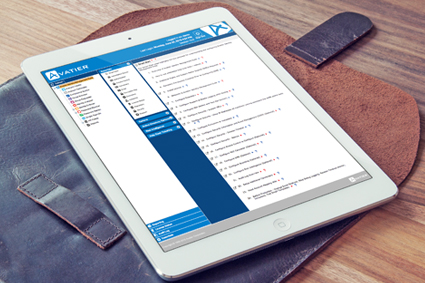To lower costs, businesses seek configurable solutions over custom developed IT applications. Most IT organizations do their best to avoid customizing enterprise apps. Customizations tend to be costly while creating maintenance challenges. As a response, identity management vendors are providing greater configuration options. Areas of focus include security, role management, branding, and workflow. The difference between customization and configuration weighs the benefits of writing code versus using a menu, fields, and wizard-driven features.
Although configurable systems are preferable, they also present challenges of their own. For enterprise applications, configuration options can be numerous, layered and full of nuances. Ideally, configurable systems lower your support costs. At the same time, configurable systems can be underutilized. They may lack optimization, not provide needed coverage, and deliver diminished ROI.
There’s no getting around the fact. Configuration does not replace the depth and detail required for complex systems. It may make changing operations easier for programmers and administrators. However, configuration does not automatically lower the bar to administration. Particularly, this is true for IT audit, compliance reviews and infrequently completed activities.
Fill-in-the-blank settings for data elements, target systems and workflow, assume logic and syntax. They require administrators to know the switches to use. They must write rules according to specific conventions and connect to downstream processes.
The Gap Between Configuration and Empowerment
Contextual learning incorporates many beliefs about how adults learn. It is based on a constructivist theory of teaching and learning. In other words, learning occurs when you construct meaning from experience. Optimally, contextual learning anchors teaching to the learning experience in real time.
For configurable systems, contextual learning empowers you to deliver full value. This is because learning is embedded with the system itself. Every field, menu and tab can relate its features, functions and rules. Knowledge gets acquired in real time at the point of need. Gone are the days of flipping through windows, pages and other resources. No more searching for system reference materials and training.
Contextual Learning Embedded in Identity and Access Management
For enterprise applications, software and SaaS services, contextual learning takes several forms. Generally, it takes the form of embedded information and instruction. Providing targeted instruction, learning covers every system module, tab, feature and aspect. It addresses each module. Embedded instruction let you drill into activities and receive details.
Contextual learning makes identity management configuration something administrators can follow. With kick-start or smart instruction, modules start with best practices and guidelines. You receive a getting started laundry list with sequencing and logic built-in. When touching the system, an instructional path is laid out for you. When deploying new modules and train administrators, the steps ensure implementation success. Contextual videos and knowledge base links let you learn as you go.
A contextual knowledge base contains all administrator and end user system content. At any point, a contextual knowledge base addresses each individual instance. It serves as a virtual coach for people who infrequently use the system. By compartmentalizing instruction, contextual knowledge encourages user acceptance and adoption. It leads users to best practices, utilization and optimization without formal training. Utilizing a contextual knowledge base, you receive faster return on your investment.
Contextual videos are critical to technical learning outcomes and user motivation. Videos provide a narrative consistent with the system goals and user’s activities. They show real life examples that help learners achieve expert-like differentiation. Videos also help system novices quickly and easily process the concepts. They enable you to integrate learning, and apply it real time. Videos offer clear and explicit instruction leading to mastery. Embedded videos expand a user’s skill acquisition and enhancement.
The Era of Mobile Contextual Learning
Contextual learning provides a proven pedagogical framework for achieving business goals. Neither the methods nor the paradigm are new. What’s different is how learning is delivered. No longer do you work with a box in your lap. The days of fanning through pages, following indexes, and extrapolation are over. Your tablet or phone sits there instead. You watch and read as you go. You start down the path of experts. You configure best practices and set the right switches wherever you are.
Contextual learning leads to better results. It increases your effectiveness while minimizing the time spent to complete tasks. It motivates an individual by integrating content focused on the situation. Contextual mobile learning accelerates the value you receive from an enterprise system. Users with little experience can pick up learning at any starting point. They receive instruction directly bridging whatever knowledge gap is at hand. Through guidance, you limit ineffective behaviors and missed opportunities for delivering value. Contextual learning ensures optimum configuration at every point in identity management operations.
 Get a Free Copy of the Top 10 Identity Management Best Practices Workbook
Get a Free Copy of the Top 10 Identity Management Best Practices Workbook
Begin your identity management initiative by following what corporate compliance experts recommend for the workflow automation of businesses processes, self-service administration and IT operations.




